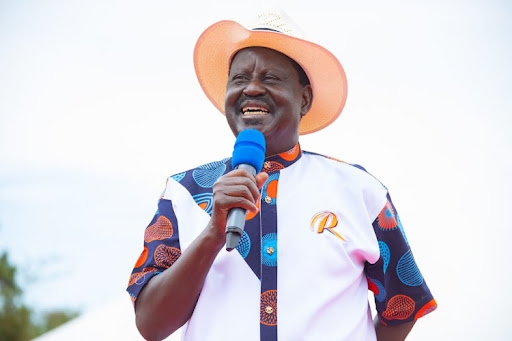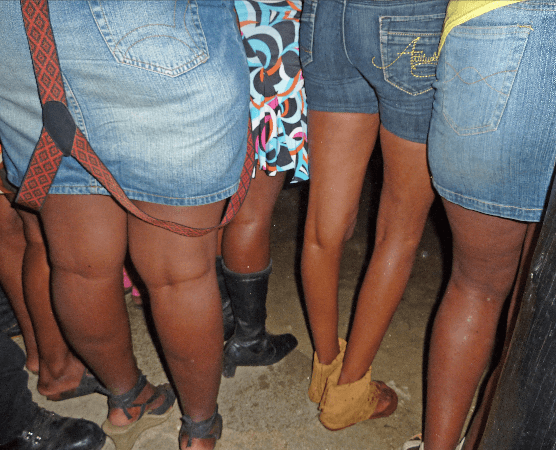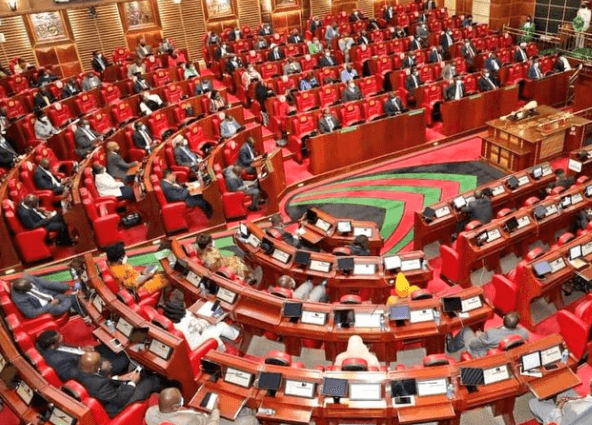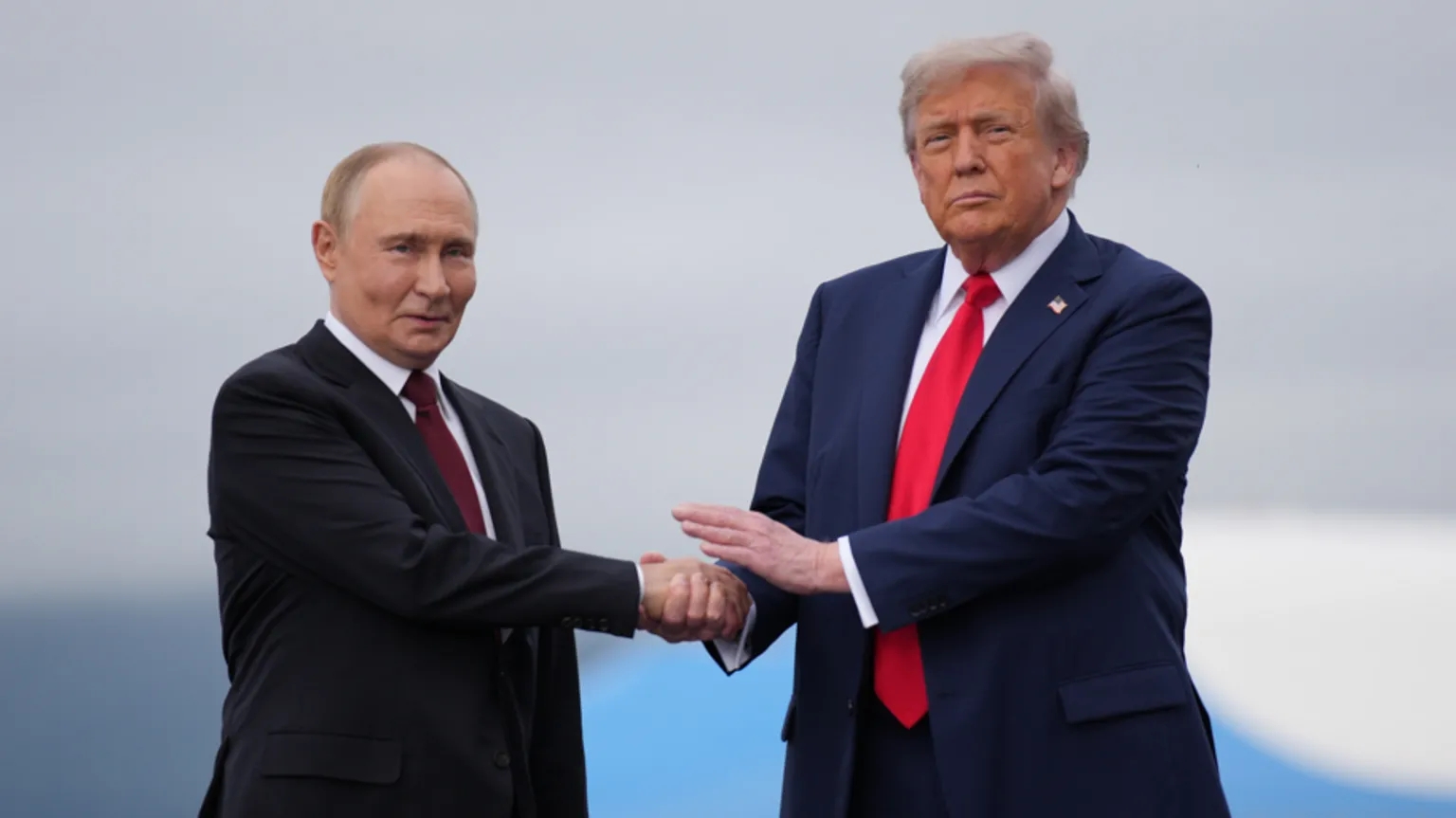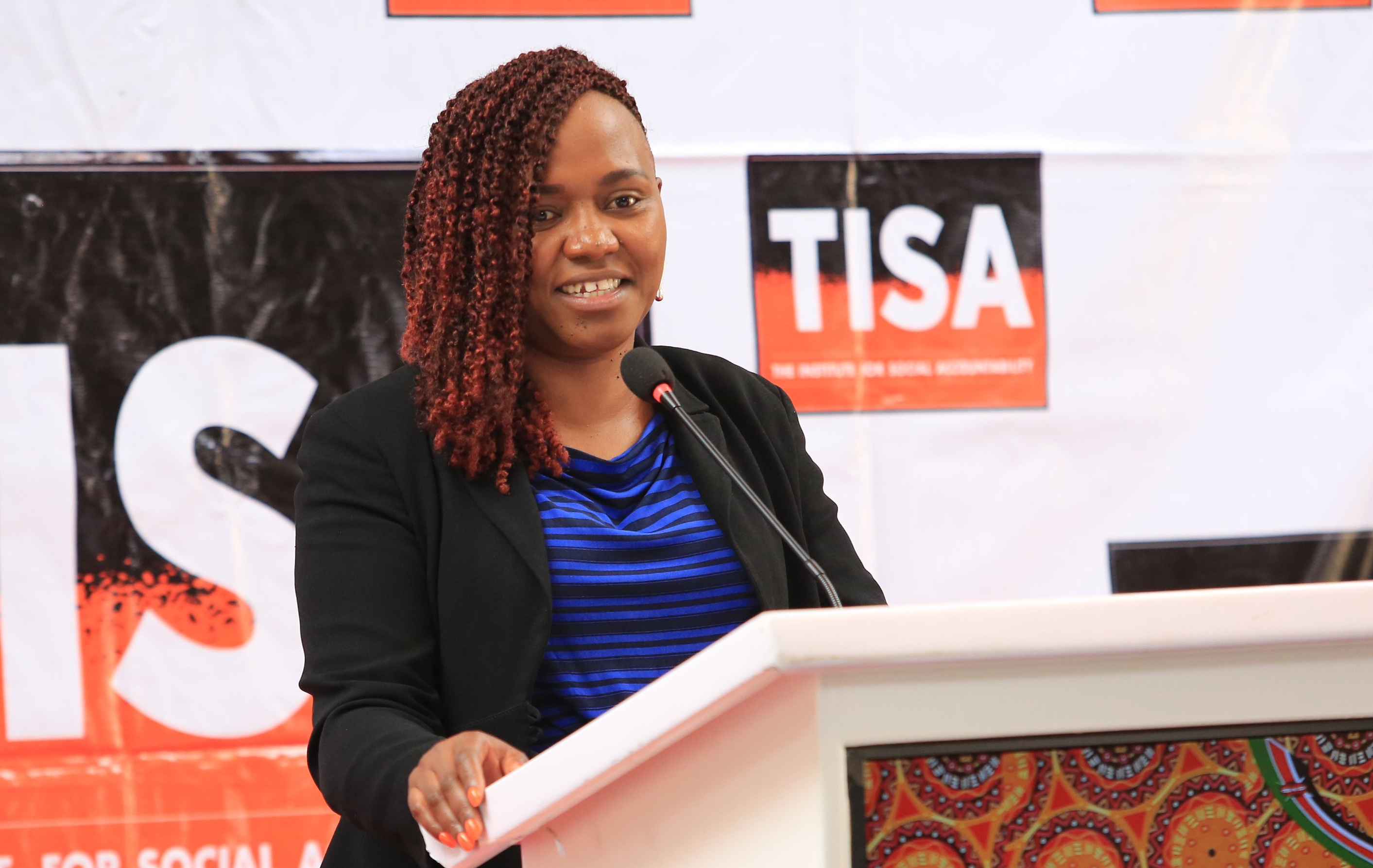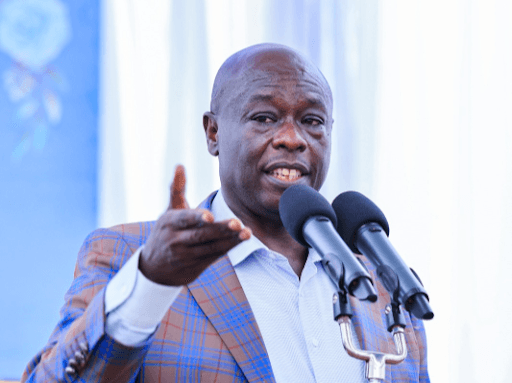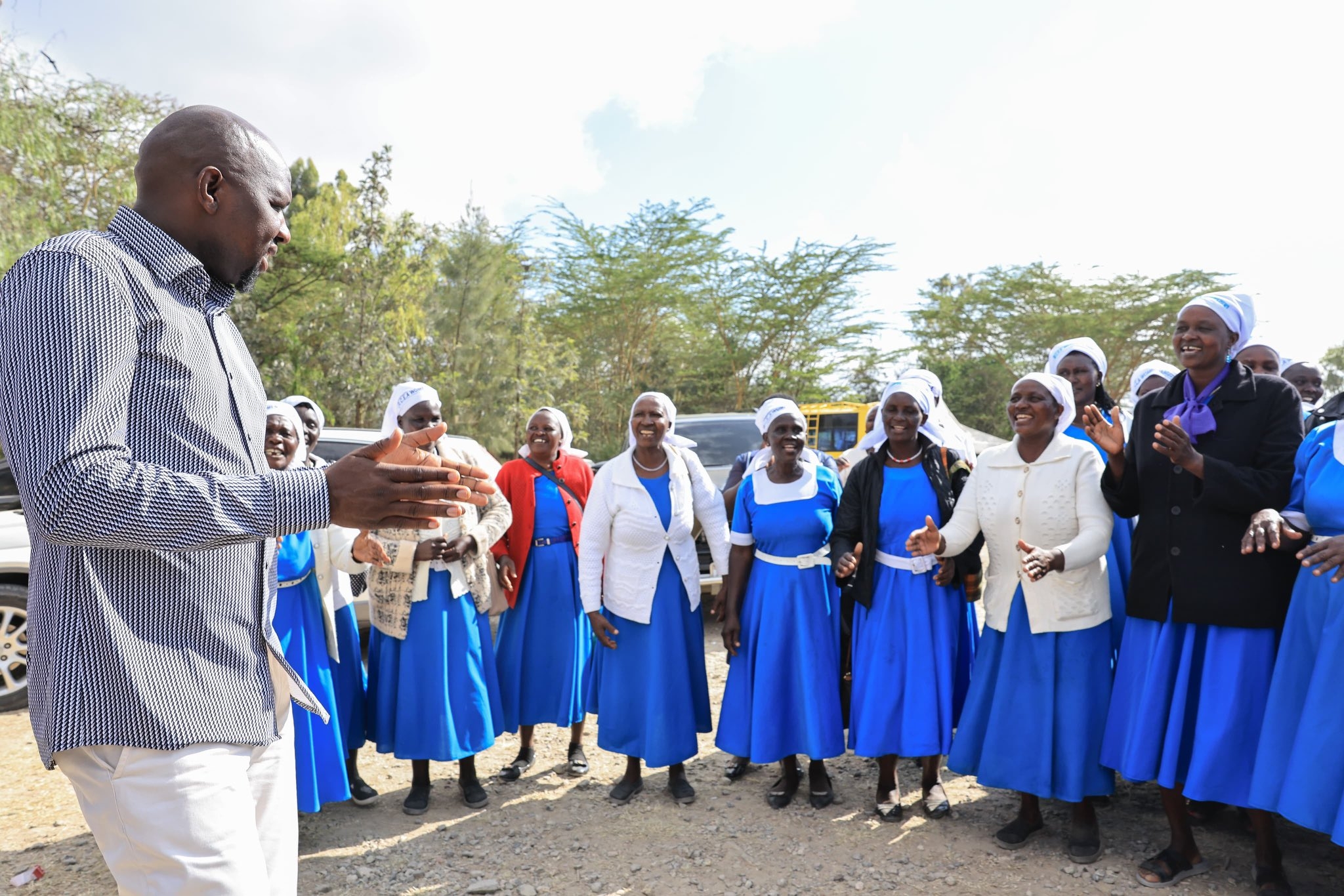
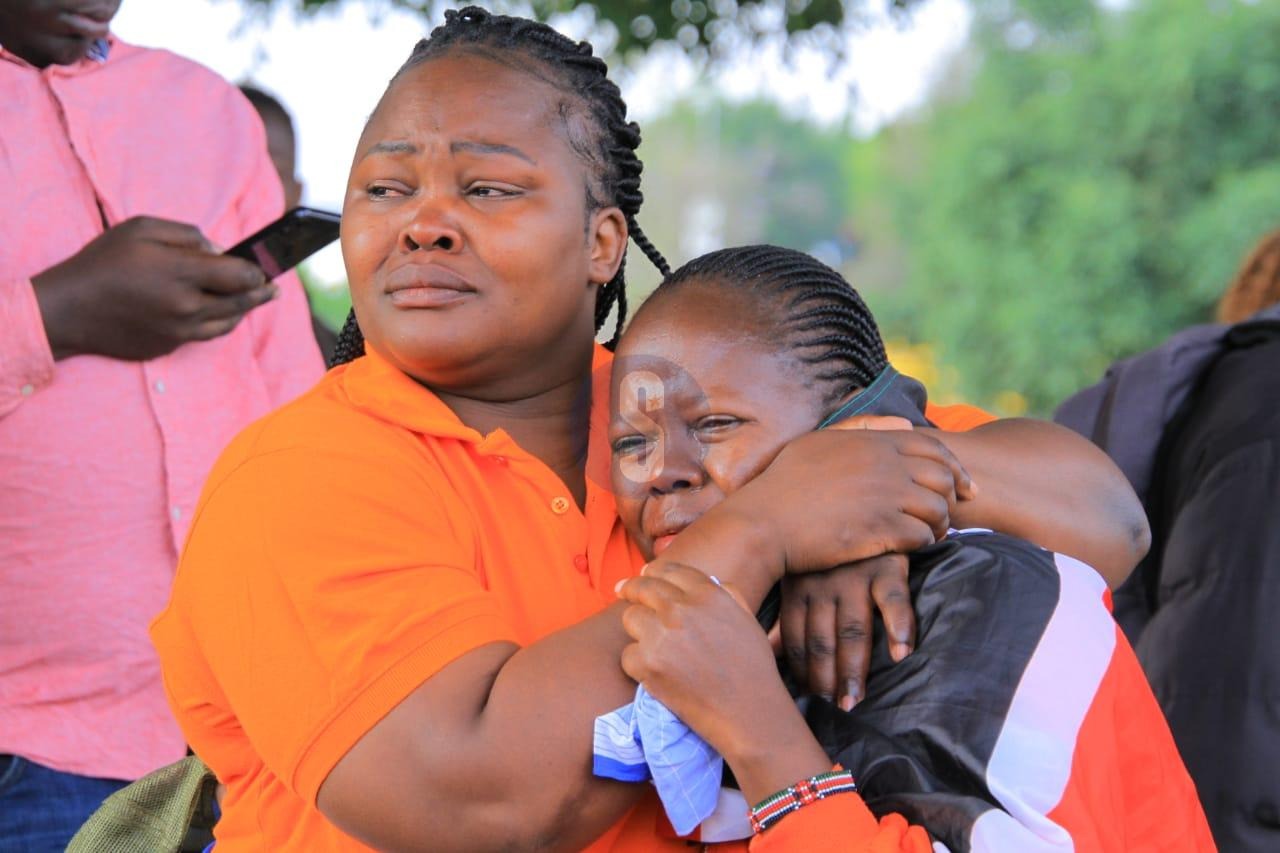
The city stirred beneath low clouds and muted birdsong, as if even nature had chosen silence for what was coming.
At Jomo Kenyatta International Airport, the air hung thick with expectation. Along the runways, Kenya Defence Forces officers stood like statues of solemnity — red ceremonial jackets pressed to perfection, white belts slicing through the stillness, black trousers marked by a blood-red stripe that mirrored the grief of the nation.
Their boots gleamed under the tender light, but their eyes betrayed the weight of the hour.
By 9 am, the airspace above Embakasi shimmered with anticipation. Motorcades whispered into the airport grounds, their tinted windows reflecting the soft melancholy of a mourning sky.
President William Ruto arrived first. A few minutes earlier, Deputy President Kithure Kindiki had stepped onto the tarmac. Then came former President Uhuru Kenyatta. Around them stood Cabinet secretaries, generals, and family members.
Inside the state pavilion, Mama Ida sat quietly, her face turned toward the runway, her hands clasped tightly in her lap. Her eyes held the storm of a woman who has loved, waited, and now must let go.
At exactly 9.39 am, a soft hum rose from the horizon. The nation’s heartbeat seemed to synchronise with the approaching engines. Kenya Airways flight KQ203 — renamed RAO001 in midair — began its descent into Nairobi.
In that moment, all of Kenya watched. The plane had become more than a vessel; it was a pilgrimage in motion, carrying the remains of Raila Amolo Odinga — the man who had shaped dreams, divided loyalties, and redefined hope.
Across the country, television screens flickered with the same image: a red-tailed bird of metal touching home soil.
When the aircraft’s door opened, the first figure to step into view was Winnie Odinga. What she carried stilled every camera and heart — her father’s white fedora hat. Behind her walked Ruth Odinga.
Inside the VIP lounge earlier that morning, Mama Ida had waited in near stillness. Winnie knelt before her mother, handing over the white fedora — that soft, familiar crown that had once defined an era. Ida reached for it slowly, her hands trembling as she touched the brim. For a moment, the world shrank to two women and one hat — the bridge between love and legacy.
At 9.45 am, the cargo door opened, and silence fell like rain. A flag-draped casket emerged, shimmering with the green, black, red, and white colours of Kenya.
“Baba! Baba!” came the cry — raw, uncontained, the wail of a people losing not just a leader but a mirror of themselves.
From somewhere near the fence, a voice tore through the air: “Jowi! Jowi!” The traditional Luo lament echoed like thunder, answered by hundreds more until the airport became a chorus of grief.
Men and women clung to the barricades, tears streaking down faces. Some collapsed to their knees, others raised twigs toward the sky, whispering prayers into the wind. Security officers shouted in vain, pleading for order. But order has no place in mourning.
By 10 am, chaos had rippled through the airport. Thousands of mourners breached the outer gates, surging toward the runway.
The Kenya Civil Aviation Authority later called it a “security incident.” But what unfolded was something deeper — a nation’s grief bursting past protocol.
Mourners scaled walls, boda boda riders roared past barriers, and flags waved amid the confusion. The casket, guarded by KDF soldiers, became the still centre of a storm.
At 10.20 am, the black hearse began to inch forward, its glass sides reflecting the mass of humanity pressing around it. A light aircraft hovered above, tracking the movement below.
Traffic along Mombasa Road froze. Motorists abandoned their vehicles, kneeling by the roadside as the motorcade passed. “Let him rest well,” a matatu driver whispered, crossing himself as the sirens wailed past.
Back at JKIA, operations ground to a halt. The Kenya Civil Aviation Authority issued a Notice to Airmen, suspending all flights temporarily.
“KCAA informs the public that operations at Jomo Kenyatta International Airport have been temporarily suspended due to an ongoing security situation following the arrival of the remains of the late Rt Hon Raila Odinga,” read director general Emile Arao’s statement.
By late morning, another crisis was brewing. Parliament Buildings, where the body was to lie in state, had already been surrounded by mourners — men and women scaling gates, waving flags, chanting “Jowi! Baba!”
Lawmakers Babu Owino, Ledama Olekina, Otiende Amollo, and Sylvanus Osoro tried to calm the sea of grief.
“Raila was a movement,” Olekina shouted from the fence. “Parliament has proved too small for him. That is why we are requesting everyone to move to Kasarani.”
And so, the plan changed. The motorcade, which had been heading toward Lee Funeral Home, was redirected mid-route. Military and police vehicles turned toward the Eastern Bypass, joining the Expressway before snaking toward Thika Road.
At 11.20 am, the government announced: “Public viewing will now take place at Moi International Sports Centre, Kasarani.
At 12.46 pm, the procession began its slow crawl from JKIA. It joined the Nairobi Expressway through the Eastern Bypass entry.
From Mombasa Road to Thika, Nairobi became a slow-moving river of humanity.
By 2 pm, the procession had reached Kasarani Stadium. The gates were already overwhelmed — mourners flooding the stands, the pitch, even the perimeter track. Some waved small Kenyan flags, others held placards with Raila’s face and the words, “You fought for us.”
As the hearse entered the compound, chants of “Jowi!” rolled like thunder. Inside the stadium, drums rolled, choirs sang freedom songs.
By 2.33 pm, Kasarani was full. Every seat was taken, every stairway occupied, and still they came.
When the hearse door creaked open, six soldiers in full ceremonial dress lifted the casket and began the solemn walk toward the main arena. By 3.03 pm, the patience of the crowd had begun to fray.
For a brief moment, order returned — but the stillness was deceptive. A sudden crack — sharp, startling — sliced through the afternoon. Tear gas canisters hissed through the air like angry serpents. Within seconds, the stadium was a blur of confusion.
At 3.19 pm, tragedy struck. In the push to leave, a section of the crowd stumbled near the lower stands. One person fell, then another. Screams rose. Panic surged. The movement turned into a crush — scores were feared injured as people tried to escape the tightening ring of confusion. And then, as suddenly as it began, the chaos ebbed.
Somewhere near the podium, a single choir voice began to hum a hymn — soft, broken, beautiful. One by one, others joined in until the sound rose again, fragile but alive.
At 3.45 pm, the long wait gave way to a trembling hush. Then, from the VIP entrance, President William Ruto stepped forward. He bowed his head, murmured a silent prayer, then stepped aside.
And then came Mama Ida and the rest of the family. Former President Uhuru Kenyatta approached the inner chamber where the casket lay. Top security officials moved with solemn precision.
By 4.51 pm, the ceremonial movement began. Chief of Staff Felix Koskei led the Executive carefully toward the waiting casket. Behind them, ODM party officials filed quietly.
The casket was moved carefully to the central chamber of the stadium, ready for its next stage in the public viewing, the air thick with grief, respect, and the silent poetry of a nation saying goodbye.


